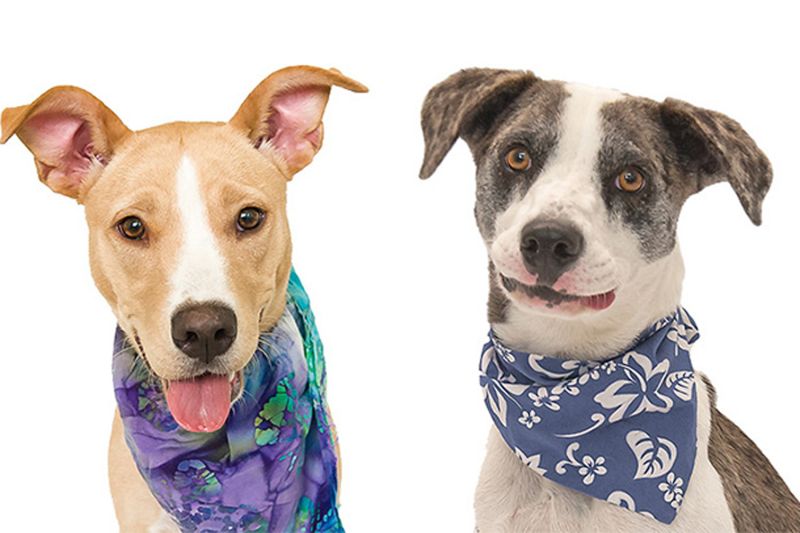With spring in our step
From moving beyond breed labels to capitalizing on Pokémon Go, the latest issue of Animal Sheltering magazine has something for everyone
March 7, 2017

It’s been nearly 12 years since an international team of scientists announced that they had sequenced the canine genome—mapping out the genetic code of a female boxer named Tasha.
Do you remember that moment? Nope, neither do I. Even though I’m a longtime dog lover, the news barely registered on my mental radar.
At the time, I was deeply immersed in animal rescue. DNA science seemed far removed from the day-to-day challenges I faced as a foster caregiver, trap-neuter-return devotee and all-around animal advocate. Frankly, I would have paid a lot more attention to an announcement of a new spay/neuter grant program or a fail-safe product for removing urine smells from carpet.
But as it turned out, the canine genome project was more relevant to the sheltering and rescue field than I ever imagined. Within a few years, companies had turned that scientific breakthrough into a now mainstream commercial product—the canine DNA test. Those tests, in turn, paved the way for studies that have directly impacted our work. They’ve provided us with information that makes us better equipped to fight breed discrimination, and they’ve forced us to rethink much of what we thought we knew about dogs and breeds.
We now know that our visual breed guesses aren’t just wrong much of the time, but they often work against the best interests of dogs and adopters. As a result, an increasing number of shelters and rescues are changing the way they describe the dogs in their care, and they’re seeing their adoption numbers rise as a result. In the Spring issue of Animal Sheltering magazine, our cover story, “No more guessing games,” delves into this topic, and includes practical steps for organizations that want to go breed-label-free.
Elsewhere in the issue, you’ll find other examples of how our field is always evolving. Take transport programs. Who could have envisioned 20 years ago the explosion in partnerships between shelters often a thousand or more miles apart? By trucking animals from shelters with a surplus of animals to those with a surplus of adopters, we’re saving countless lives. At the same time, pet transport involves a lot more than loading up some crates and hitting the interstate. Our “(Transporting) across the divide” feature describes how some shelters and rescues are coping with various state regulations while addressing the root causes of overpopulation.
If you’ve been in this field long enough, you remember when print mailings were the bulwark of nonprofit fundraising and communications efforts. While print still has a role in the age of email and social media, shelters today face a dizzying array of options for communicating with their supporters. Our “101” story, “A method to your messages,” offers tips for finding the right mix of approaches to reach adopters, volunteers and donors through the medium of their choice.
New technology can also mean new opportunities to promote adoptable animals, as the Muncie Animal Shelter in Indiana discovered last year. In “Love in the time of Pokémon,” we talk with shelter director Phil Peckinpaugh, who capitalized on the Pokémon Go craze to bring hordes of volunteer dog walkers (and a fair number of adopters) to his shelter. Learn how an impromptu promotion became an unexpected hit; perhaps your organization will be the one that connects adoptable animals with the next cultural phenomenon.
Looking for other creative ways to boost adoptions? “In fosters we trust” describes an innovative program that empowers foster caregivers to promote and find homes for their temporary charges. In “Garfield gets (a little) serious,” cartoonist Jim Davis explains what motivated him to lend his world-famous “Garfield” characters to promote shelter pets.
On the always important fundraising front, our “Seeds of support” article covers the latest thinking on how nonprofits can identify major gift donors and nurture those relationships.
As the world continues to change, we will confront new challenges but also find new tools to end animal suffering and homelessness. That’s what Animal Sheltering magazine is all about: bringing you—the people in the trenches who are saving lives every day—the best and most progressive ideas in our field.
We hope you enjoy this latest issue of Animal Sheltering and that the articles help you find ways to better serve the people and animals in your community.
Not a subscriber? Sign up now to receive the award-winning magazine for shelters, rescues, animal care and control agencies and everyone involved in community animal welfare. Subscribers receive four print issues a year and full online access to past and current issues.


